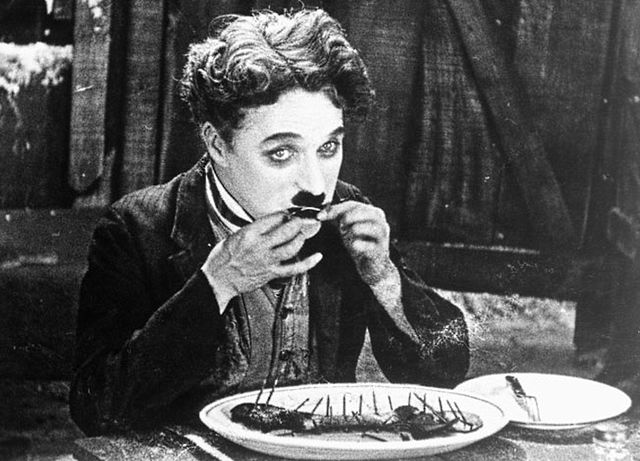
When did silent movies end? The last silent movie was The Poor Millionaire, released in 1930.
The expression “silent movie” didn’t exist until movies with sound were released. There was no need to have a label for something when that thing was the only option. “Silent movies” were just called “movies”, which is the shortened version of “moving pictures”. When movies with sound were released, they were called “talkies”, which is the shortened form of “talking pictures” and the label “silent movies” was invented to differentiate the two types. The word for something like this is a retronym, a title that is retroactively created.
Moving pictures evolved alongside the work of photography. The world’s first photograph was taken by Joseph Nicephore Niepce in 1826. It wasn’t long after this that the first moving pictures were made. People realized that if they took enough pictures of a moving object, put them on glass slides, shone a light through them, and moved the slides on a rotating carousel, they could project a moving image onto the wall. The problem was that photography wasn’t advanced enough to take photos rapidly enough or of a high enough quality. In 1878, Eadweard Muybridge worked out a way around this and he used 12 cameras placed at slightly different intervals along a racetrack to take photographs of a running horse. When he rotated the photos on a carousel, he had a movie of a running horse. It is worth having a look at. Here is a link.
The advances in technology began to speed up and by 1888, celluloid film had been invented. It is highly flammable, which is why not a lot of old movies are still around, but it can be used to take lots of photographs very quickly. By the end of the 19th century, movie theaters were springing up and it became common to go and watch a film. By the end of the First World War, the movie industry was firmly entrenched and turning out movies at a rapid rate. The movies all obviously had no sound. However, they weren’t all in black and white. They weren’t as colorful as our movies today, but the film rolls could be dyed or painted to give some semblance of color.
As there was no sound, silent movies used several techniques to relay the story. The first was in the acting. Actors would use bigger gestures and facial expressions to convey more meaning. Silent movies sometimes employed narrators in the theaters. They also used inter-titles, which were a still in the movie that had a caption to explain part of the story. Each theater would have a band that played music to accompany the movie. The narrator and band would vary from theater to theater, so the same movie might not be identical in different places.
Movies with sound had existed since the 1890s, but it was very difficult to synchronize the sound with the movie. The movie would be played from one device and the sound would be recorded and played back from a separate device. It was very hard to make them the same length and to have them play at exactly the same time. There was no system of amplification then, either, so it wasn’t possible to make the audio loud enough to be heard in a movie theater. And, on top of that, it wasn’t possible to record people with any real quality unless they were standing motionless in front of the microphones. All of these problems meant movies with sound were very difficult.
Movies were becoming more and more popular, which led to more research into putting sound to the films. Different types of technology were invented, but the one that won out was sound on the film. In 1900, Ernst Ruhmer had worked out how to translate sound into light that he recorded on the movie film. When the film was played back, a light could be shone through the film that hit a photoreceptive cell, which turned the light into different electrical signals, that could be played as sound. It took a few more years, but it was now possible to put the sound on the same movie reel as the movie, which meant synchronization was no longer a problem. There were big advances in microphone and amplifier technology at the same time. By the early 1920s, the first few short movies with sound had been made. They were impressive, but the sound quality still wasn’t good enough.
1927 was the year that started the end of the silent movies. A few movie studios released newsreels and a few short movies with sound embedded in them. Then, on October 6th, 1927, Warner Bros. released “The Jazz Singer”. It starred Al Jolson and it was a huge success. The entire movie didn’t have sound. Only some conversations, but all of the songs sung by Al Johnson did. The movie was probably successful because Al Johnson was in it, but being able to hear his voice was a huge draw. The success of the Jazz Singer showed the Hollywood studios that sound was the way to go and they never looked back.
The last real silent movie to be made was The Poor Millionaire in 1930. There was no way for silent movies to compete once sound was possible and the stars of silent movies had to shift to talkies. Not all of them were able to do it and some big silent movie stars disappeared. And this is what I learned today.
Image By United Artists (work for hire) – Doctor Macro, Public Domain, https://commons.wikimedia.org/w/index.php?curid=19620880
Sources
https://en.wikipedia.org/wiki/Sound_film
https://videolibrarian.com/articles/essays/how-talkies-changed-the-acting-industry/
https://en.wikipedia.org/wiki/Silent_film
https://kodakdigitizing.com/blogs/news/when-did-the-silent-film-era-end
https://en.wikipedia.org/wiki/The_Jazz_Singer
http://www.notcoming.com/features/silenceaftersound/
https://en.wikipedia.org/wiki/The_Poor_Millionaire
https://www.artandobject.com/news/what-you-might-not-know-about-worlds-oldest-photograph
